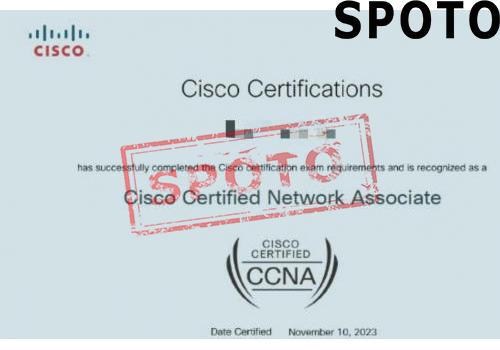
Table of Contents
- Contextual information and intent-driven power
- The Shifting Landscape:
- Networking's future
- Embracing Innovation:
- Agility and Adaptability:
- Security as a Foundation:
- The Customer-Centric Approach:
- The Cloud and Virtualization:
- Interoperability and Standards:
- Education and Training:
- Environmental Responsibility:
No doubt about it, Cisco had a terrible quarter. Therefore, the issue is whether Cisco can "get around it" in the coming quarters. The situation is complicated in this regard. How extreme Cisco is willing to be in its outlook on the future will determine how things turn out. At the heart of this landscape are network vendors, the architects of the digital highways that connect our modern world. Cisco, a prominent player in this field, along with other network vendors, faces the challenge of keeping up with the rapid pace of change and charting a course into the future. Here we will explore the strategies and considerations that Cisco and its counterparts must embrace to navigate the ever-evolving landscape of networking technology.
Contextual information and intent-driven power
By using reinvented hardware and the most cutting-edge software in this new strategy, Cisco is altering the fundamental design of networking. Customers will see a significant improvement in performance, productivity, and agility thanks to this switch from hardware-centric to software-driven networking. The intuitive network is a platform that is intelligent and secure, driven by intent and informed by context:
- Intent: Intent-based networking enables IT to transition from time-consuming traditional methods to automating intent, making it feasible to manage millions of devices in a matter of minutes—an essential advancement to aid organizations in navigating a constantly evolving technological landscape.
- Context: The network can only generate fresh insights by contextually interpreting the data. The context around the data—the who, what, when, where, and how—is just as significant as the data itself. The wise network analyses everything, resulting in improved security, more individualized experiences, and quicker operations.
- Intuition: Scalable machine learning is offered by the new network. With machine learning already included, Cisco is harnessing the massive amounts of data that pass through its networks globally to release that data and offer useful, foreseen insights.
The Shifting Landscape:
Transformative changes in how people and businesses communicate, work together, and function have been brought about by the digital era. Cloud computing, the Internet of Things (IoT), 5G connectivity, and the increasing demand for seamless remote work capabilities have all contributed to the complex tapestry of modern networking. As a result, network vendors are confronted with the task of not only providing reliable connectivity but also enabling innovative solutions that align with the changing needs of their customers.
Networking's future
Two-dimensional virtualization is a vital level of networking's future. Virtual networks, which allow for ad hoc communication locally or worldwide, serve as the beginning of connections. One example is SD-WAN, which is offered by Cisco, albeit its products are subpar in comparison to those of feature leaders such as 128 Technology. Second, no current box-network provider can realistically expect to succeed in this game as platforms will soon get virtualized to provide white-box and software networking. If networking is not altered by new benefits, these advances will destroy any prospects for network equipment.
Embracing Innovation:
To navigate the future, network vendors like Cisco must wholeheartedly embrace innovation. It entails staying ahead of technological trends and continuously refining their solutions. Whether it is leveraging artificial intelligence (AI) for predictive network maintenance, adopting software-defined networking (SDN) to enhance flexibility, or incorporating security measures that can thwart evolving cyber threats, innovation is the compass that will guide these vendors through uncharted territory.
Agility and Adaptability:
One defining characteristic of successful network suppliers is their capacity to adapt to market needs. Agility and flexibility are crucial in light of the tremendous rate of change in the technology ecosystem. It requires not only the development of new technologies but also the integration of those technologies into existing infrastructures. Network vendors must be capable of accommodating the migration from legacy systems to next-generation solutions without disrupting their client's operations.
Security as a Foundation:
In an increasingly interconnected world, security is no longer an optional add-on; it's a foundational element of networking technology. As cyber threats become more sophisticated and pervasive, network vendors must prioritize security measures that protect data, applications, and communication channels. It includes encryption, robust access controls, and proactive threat detection mechanisms. Cisco and other vendors must instill confidence in their clients by demonstrating an unwavering commitment to safeguarding digital assets.
The Customer-Centric Approach:
Navigating the future isn't just about embracing cutting-edge technologies; it's about understanding the needs—of customers and tailoring solutions to meet those needs. Network vendors must adopt a customer-centric approach, collaborating closely with their clients to comprehend their pain points, goals, and challenges. By forging strong partnerships, vendors can create solutions that address immediate concerns and position clients for future success.
The Cloud and Virtualization:
The cloud has revolutionized the way networks are deployed and managed. Network vendors must adapt to the growing demand for cloud-based solutions that offer scalability, flexibility, and cost savings. Cisco and its peers must develop cloud-compatible offerings that seamlessly integrate with various cloud platforms. Virtualization, which allows multiple virtual networks to coexist on a single physical network, is another avenue vendors must explore to optimize resource utilization and reduce operational complexities.
Interoperability and Standards:
The network landscape is diverse, with various vendors providing different components and solutions. To ensure seamless connectivity and functionality, interoperability and adherence to standards are essential. Cisco and other network vendors should actively experience industry collaborations to define and promote interoperable solutions that benefit vendors and end-users.
Education and Training:
As networking technology advances, there's a growing need for skilled professionals who can understand, manage, and optimize complex network infrastructures. Network vendors must invest in education and training programs that empower individuals with the skills needed to deploy and maintain advanced networking solutions. It supports its clients but also fosters an ecosystem of expertise that benefits the industry on the whole.
Environmental Responsibility:
In the era of sustainability and environmental consciousness, network vendors have a responsibility to develop solutions that are energy-efficient and environmentally friendly. Cisco and its peers should explore ways to reduce the carbon footprint of their products and operations, contributing to a more sustainable technological future.











